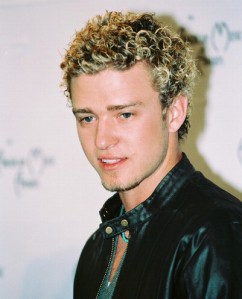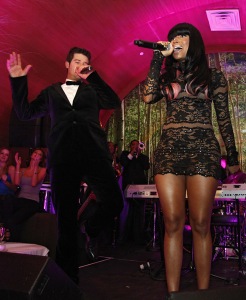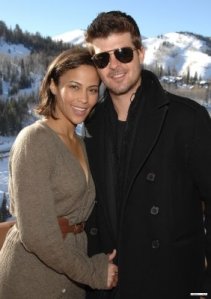Well, I’d advise you not to start like Giovanni Ribisi’s character in Boiler Room who, after some intense flirting with the eyes, tells Nia Long he was just looking for some “chocolate love.”
It’s probably not in your best interest, WG to tell a BW (at least not at first) that you’re interested in some “chocolate love”.
If this were real life, Nia Long might’ve clocked him. Even still, though Ribisi makes an error with that painfully awkward line, there’s something that makes him appealing. Boiler Room, is a case study in how to make nerdy white guys (with the exception of Vin Diesel who couldn’t be nerdy if he tried) cool through hip hop culture and appropriation. Rent it, you’ll see what I’m talking about. Especially the scene where Nicky Katt defines “nigga rich.”
No, wait: let’s watch that now. It’s that good.
And, yet (I’ve been writing “and, yet” toward a much more serious project, ahem, dissertation, for the last two weeks so you’ll probably see that here..just bear with me) the ways that the smoothness of the JT Marlin boys emerges does kinda answer the question posed to DBW.
But first let me just say this: I’m not an advice columnist. What I actually want to do in this post is to break down the aesthetics of non-black “crossover” artists and their acceptability in black community, particularly through marketing to BW. Or, in other words, how do THEY (yes, THEY as in those white male individuals who make hegemonic decisions sitting around a boardroom puffing on cigars) know what we BW like?
First, clearly, it’s not the nerdy WG who wins the heart of the BW (at least according to television, film, and radio). Take Ribisi’s character Seth from Boiler Room:
Pre-successful broker:

And, then here he is after he’s become a successful broker and is taking Nia Long (talk about a damn fetish object–she’s the ONLY person of the color in the movie–Vin plays an Italian within the text) out for a date.
And here’s him closing someone in that real smooth way to prove the point.
As I said earlier, part of the reason this movie is so much about appropriation is because of the hip hop soundtrack and score. It attempts to create an “aura of blackness” around the characters to help them become more masculine and sexualized.
To the point of this post: We’ve seen this before. Dress and groom a WG in a particular way, give him an r&b track and make him sing in a particular style and you’ve got the aura of blackness that has been deemed marketable to BW and BF in general. Some folks call it ‘Blue Eyed Soul”–I call it creepy. Let me show you what I’m talking about.
In the beginning (well, for the purposes of brevity I’m skipping past The King and moving along to 1979): There was the Doobie Brothers. Love the Doobie Brothers. But, uh, you know what? I don’t remember the majority of the members of the damn Doobie Brothers. You know who I do remember though? Michael “Blue eyes” McDonald. Remember the criteria I listed above: Dress and groom; R&B track; sing in particular style (let’s call it, falsetto).
Oh, yes, “what a fool believes” Michael. That’s the song. And while he is sporting that not very attractive mullet, he’s started a particular kind of grooming (namely, the very meticulous beard) that will become a trend of these WGs. Also, there’s the R&B sound attached as well as the falsetto. Here’s another:
I mean the melody has been sampled all over the R&B audioscape. But all the other criteria are still functional. But now there’s something else to look for: black presence within the video to hail a particular demographic. Unfortunately, “I Keep Forgetting” doesn’t have that..but this next one does.
Okay, so this is Patti Labelle’s video but in terms of nostalgia: this is as much Michael McDonald’s song as it is hers. All criteria in place plus black presence. But what’s also of interest is the fact that neither of these people are in the same room or space. The whole video is done by split screen. Clearly the video suggests they miss and long for each other but there’s no great reunion at the end. Now, it’s the 1980s and interracial relationships are clearly not the issue du jour. But the way this is framed almost makes me suspect there was some nervousness with how to deal with these two folks.
Fast forward to 1995. The next person seemingly marketed to BW is Jon B. In writing this post, I must confess, I spent about an hour going down memory lane and squeeing with joy at how “fyne” he was. Sighs. Initially Jon B did meet the musical criteria but hadn’t quite mastered the aesthetic look. Look at his first album hair (the beard and voice were in place):
Couple things to note: The racially ambiguous leading lady becomes an interesting figure of identification. She’s not quite this and not quite that. Also, Jon B’s wardrobe clearly marks him as a participant in R&B fashion. (Good Lord, do you remember those Karl Kani boots and white baggy jeans? Thank you Jesus for delivering me from the 90s!) Here’s a second video from same album.
More grooming done to that beard. More racially ambiguous women. More black people in general–including the king of soft, make you rip off your panties and sing “Whip Appeal” style of R&B, Babyface. This is called “acceptability” by way of insider making the outsider trustworthy. Because honey, by album two, he hits the apex of black acceptability.
“Cool/Relax” in this BW’s mind is the best album of 1997. Seriously, it’s fantastic. And this song led the way. Codes of blackness are far more visible–as well as Jon B’s participation in this culture. His barber, his boys, her girls, their meet-up location is clearly hailing a particular spectator. BW! Less ambiguous than the models before her, this video’s leading lady is clearly being marked as a BW. But Jon B (and his A&R people) go a step further to cement his status:
The whole damn video is about an interracial relationship, lol. And, he picked a dark-skinned model for the lead (I see you Diddy baby mama Kim Porter). Are you picking up what I’m putting down right now? It’s not the light vs. dark issue that I’m trying to illustrate but the way that blackness is specifically coded in this video. He loves us BW, doncha see?
But then, Jon B lost steam and someone else took his place. This is another theory that I have. There can only be one of these folks up at a time.
Who’s next? This guy.
He looks familiar, eh? None other than Justin Timberlake. At the time of this photo he was still a) grossly smelling his fingers from trysts with then-girlfriend, Britney Spears and b) in the boy band ‘NSYNC. Certainly not on the radar of most BW–especially in terms of the R&B connection. But then Timberlake slowly began to shift his look.
Whoaaaa..whaaa? The buzz cut and the very clear, very clean grooming in addition to the song, “Gone” actually got some heads turning. He and ‘NSYNC even ended up on the BF’s (and Viacom sponsored, eye roll) version of Total Request Live called 106 & Park for press. But there’s still moves to be made.
Like Justified. Like working with Pharell and Chad Hugo of the Neptunes. Like being marketed as a pop star/R&B artist. Like almost getting your “ghetto pass.” And then this:

Nipplegate Timberlake. He lost whatever “Ghetto pass” he attained by letting Janet take the fall for the mess.
JT survived it. Notice how the grooming and aesthetic markers only got sharpened over time. Here’s two more pics to illustrate this:
Not only are the criteria in place but also the introduction of a new aesthetic: the suit/tuxedo. JT mixes all those characteristics up in his homage to Prince “Until the End of Time.”
What I love to point out about this tour (I’m still quite bitter about not going to this show), or at least, this leg of the tour (Madison Square Garden concert) is how white the audience is. He’s singing this “quiet storm”-like R&B track to an audience full of WF with an ALL back band. My head explodes EVERY time.
Finally, finally, how can I not mention Robin Thicke. Similar to Ribisi’s character from Boiler Room, his start wasn’t quite right.
So, the first time I heard Robin Thicke’s “Lost Without You,” I thought it was Maxwell singing. Finding out that it was in fact the man mentioned above: clear and true shock. But, he looked drastically different. As another blogger put it:
When Thicke re-surfaced 3 years later, he had undergone a makeover. Gone were the flowing locks and messenger bag. The new Robin Thicke was clean shaven with a neat haircut, dressed in blazers, sweater vests, and crisp button down shirts. He was signed to The Neptunes vanity label, Star Trak.
But, that’s not the only thing that helps Robin Thicke. He clearly includes women of color (even a few BW) in the videos. And, AND, AND: he married a BW.
Want to see the tuxedo in action?
Epilogue: There have been parodies of these aesthetic markers and criteria. The most popular of course being:
While this song is clearly hilarious (even all these years post-airing), it shows that Timberlake (who produced the song) knows what the aesthetic and musical ( in particular, moment 2:06 where the music breaks? That’s a classic motif!) markers are that make this kind of blue-eyed soul singing seemingly so marketable to BW. Again, though, the audience laughing is largely white which makes me wonder what exactly the joke is to them. I mean, is it just the hearkening to Color Me Badd*?
*I suspect Color Me Badd was being cross-promoted. I mean, they were on the New Jack City soundtrack for chrissakes. But I also suspect that more white ladies remember them than remember Jon B. So there you go. I clearly remember them on 90210:









The only good “Blue Eyed Soul” music was by David Bowie.
[…] not like DH would be able to tell someone who my favorite artist is when I don’t even know. (source) Yeah, I went “When I Get You Alone” old school, ’cause that’s how I roll. […]
Actually, that Timberlake ‘before’ picture is from 2002. Gone is from 2001. NSYNC/Justin was definitely on black girls’ radar way before than. You can see Justin singing to a black fan-girl in their Pay Per View concert in 1998. The song, “For The Girl Who Has Everything” was a R&B track. Because of their singing style, hip hop/R&B influenced music, they always had more appeal to black audiences than their boy-band peers.
I am really impressed along with your writing abilities and
also with the layout to your blog. Is this a paid theme or
did you modify it your self? Anyway keep up the excellent
quality writing, it’s rare to see a nice weblog like this one nowadays..
[…] Stephen Amell if I wrote a new blog post, after hearing the new JT album and both liking it and feeling like it sounded too close to Robin Thicke, DBW is here again answering ALL the damn questions. In response to my last post on Zooey and […]
First, KW, let me commend you on your Michael McDonald reference–I think that you are but the first in what may be a McDonald-aissance of sorts. Personally, I’m not anxiously awaiting this event as I tend to get his songs (which all sound remarkably the same ala The Doors) stuck in my head for days at a time. But, on a side-note, the most recent song stuck in my head is from Wham!, George Michael’s entree into the world of music and the beginning of his campaign to attract women of color (hitting its full-stride with the “I Want Your Sex” video from “Faith”). George clearly isn’t after BW anymore, but he sported the awesomely groomed hair and sexy beard while crooning out some pretty damn fine R&B….
I enjoyed your thoughts on this and (as much as a white girl can) totally understand what you’re saying. But I’m still wondering if you’re willing to take a stand and just list the criteria for WGs that want to appeal to BW. You know, something a dude could take with him during a makeover?
Shelly,
The next time you and I are together and are near a karaoke machine, we’re totally gonna sing, “I keep Forgettin.” Just get ready.
I totally forgot about George Michael! And I shouldn’t have. He is sooo key to the transition between McDonald and Jon B. And, you’re absolutely right: Faith, Father Figure, I Want your Sex, etc. all played on urban radio. He even did that song with Aretha Franklin, lol. This will be corrected!
Criteria for a WG to get a makeover in the hopes of scoring a BW.
1) Nice 5 o’clock shadow beard/goatee.
2) Closely trimmed hair. I’m thinking the Caesar cut of 1997 otherwise known as a low fade.
3) Well fitting business suits/tuxedos.
4) Low voices
5) Falsetto singing abilities
6) Swagger
I think that’s about it.
This list should be distributed to young men. Perhaps when they register for the draft. Clean haircut+nice facial hair+good clothes=love from the ladies.
Well, but see, all WGs don’t want BW’s attention (at least not publicly). Sadly, these dudes are exceptions to the rule 😦
If it wasn’t so, I’d be off in wonderland with my very own Ribisi/Jon B/Robin Thicke creation. (I ain’t mentioning George cause he likes public bathrooms too much).
Obviously, I loved this post at the time and still do. But I realized that I forgot to ask you what you thought about Mayer Hawthorne (aka hipster Robin Thicke).
Hi Snarky,
Thanks for the props. These are light secrets to share so it’s relatively harmless, lol. I deeply love all those guys and was just trying to figure out why I so desperately lusted after them 🙂
Justin Chambers is a great case. He’s not specifically marketed to BW but I have always known that his wife’s name is Keisha. So, I can’t act like I don’t know who he is, lolol..
umm, i mean gay white guys. what the hell kinda slip was that?
lol, i suspect that was an intentional slip.
As we’ve discussed, It’s striking how much this aesthetic also appeals to straight white guys.
This was simply incredible. I too have wondered what white folks were laughing at re: Dick in a box! The analysis of Michael McDonald made me laugh, but was bang on. God, you’re good! I feel a little dirty that you’re telling BW secrets, but damn, what can you do. I have fallen for the Kenny Loggins/Darryl Hall/Michael McDonald seduction my years. Your writing is so amazing and i haven’t really considered Boiler Point before, at least not as you have framed it here. Again, damn I’m scared of you.
No Justin Chambers? I mean I know he’s not a singer but he and BW wife have adorable matching haircuts!